EcoEats
Sustainable eating by supporting and ordering directly from your local farmer's market
*Notice of non-affiliation and disclaimer: This project is not endorsed by, directly affiliated with, maintained, authorized, or sponsored by Instacart
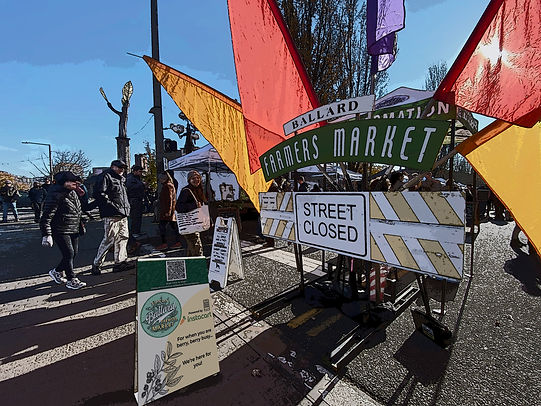
Project Overview
To educate and provide a convenient way to eat sustainably, the solution is an end-to-end experience that connects users to their local farmers markets' offerings.
Roles & Responsibilities
As Project Lead and a UI/UX Researcher and Designer, I conducted the following:
-
Project managed the team and our deliverables
-
Conducted (21) interviews, literary research, and (2) observations
-
Created personas
-
Ideated and sketched design solutions
-
Created user flow maps
-
Built Information Architecture
-
Assisted in development of Medium & High-fidelity prototypes by designing navigation components, Market Homepage, Vendor Pages, and Newsletter Pages.
-
Designed and produced physical signage and newsletter artifacts
-
Conducted (2) usability tests and evaluated findings
-
Produced design solution video
-
Presented design solution at the Final Showcase exhibition
Overview
EcoEats is a hypothetical division of Instacart that provides users a grocery delivery option to purchase through their local farmer's market. The service provides a way for users to support local vendors, conveniently order local goods, learn of the environmental benefits of buying local, and be introduced to seasonal recipes. User's orders can include a weekly newsletter printed on seed paper which factors in the time of year and can be planted to grow seasonal herbs.
Team
Project completed in a team of 3 with the University of Washington department of Human Centered Design and Engineering
Duration
3 Months
Deliverables
-
Hi-Fi Prototype
-
User Research & Personas
-
Information Architecture
-
Artifacts for Final Showcase
Tools & Software
Figma, Notion, Zoom, Slack, Instacart

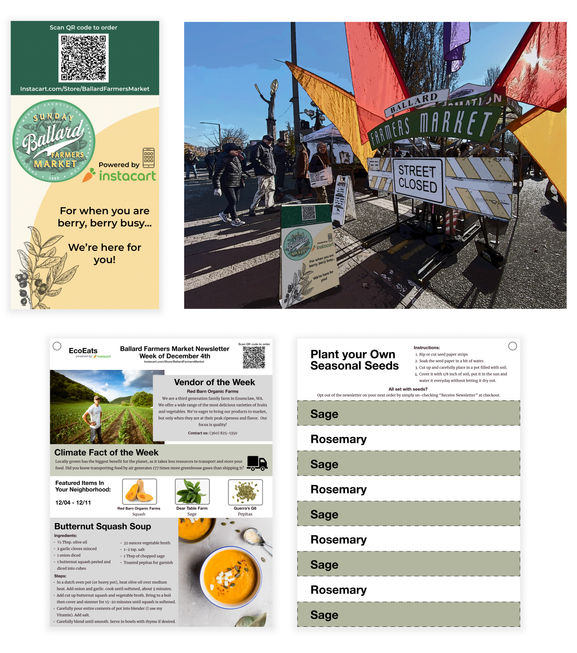
Design Process
Literary Research
User Research
User Interviews
Contextual Inquiries
User Personas
How Might We Problem Statement
Target Problems
Hand Sketching
User Flows
"The Pivot"
Information Architecture
Mid-Fi Prototype
Usability Testing
Hi-Fi Prototype
Final Showcase Demo Video
Physical Artifacts
The Problem
Working professionals often rely on food delivery services and face challenges when it comes to eating sustainably. They lack:
-
Awareness of their environmental impact.
-
Time and energy to do research about sustainability.
-
Convenient ways to create and maintain sustainable habits in their routines.
The Goal
-
Conveniently bring local and sustainable options to users.
-
Allow target users to feel confident that they are making a difference and an informed decision in their food purchases.
-
Encourage and support users to change and maintain environmentally sustainable habits.
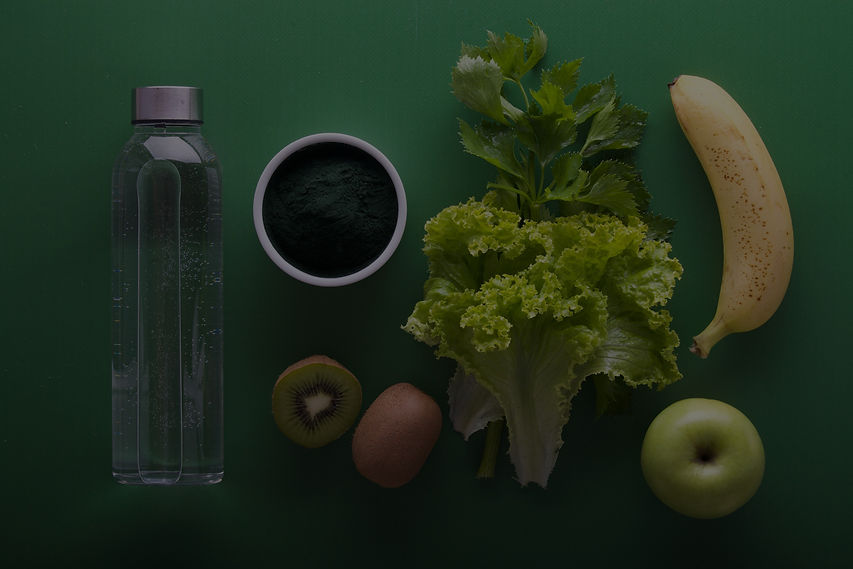
Food delivery services have exponentially increased and are projected to continue.
https://www.businessofapps.com/data/food-delivery-app-market/
Consumers significantly underestimate the environmental impact of their food choices.
https://www.sciencedaily.com/releases/2018/12/181217120027.htm
User Research
18 Consumer Interviews
We conducted 18 semi-structured consumer interviews (15 remote, 3 in-person) to specifically understand our target users’ personal experience and perspective about:
-
Making decisions about their food
-
Their habits when it comes to using food delivery services
-
How they practice or consider environmental sustainability in their day-to-day
4 Contextual Inquiries
Since interviews require participants to recall and explain what they do when they are not currently doing those things, we conducted 4 contextual inquiries (1 remote, 3 in-person) where we had participants think out loud while they were going through a food delivery app that they typically use.
11 Vendor & Delivery Interviews
We also conducted 2 delivery driver interviews and 9 open-ended vendor interviews to understand:
-
Do farmers markets actually need or want this service?
-
What differentiates us from a community-supported agriculture (CSA) program?
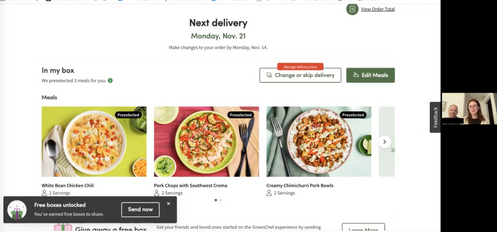
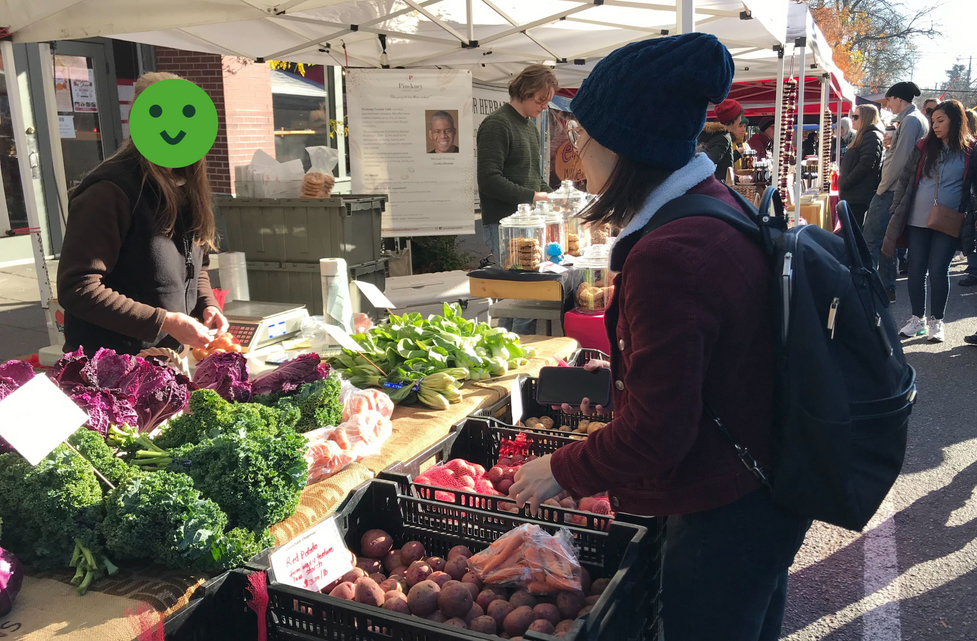
Define
Meet the Users
We created three personas, Jennifer, Luke, and Maddie, to determine each user's goals and frustrations about the relationship between their food purchases and sustainability initiatives based on the user interviews and observations. Each persona includes basic demographic information, a personal story, individual goals, and frustrations.
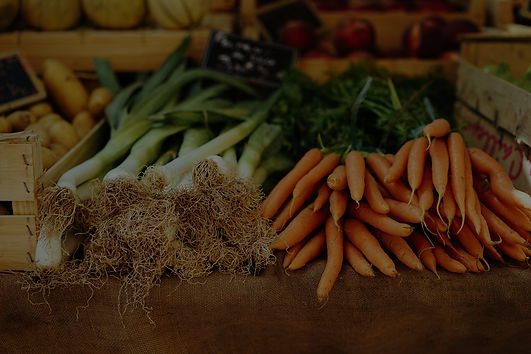
How might we...
bring local and sustainable food to full-time workers, age 25-44, who often rely on food delivery services due to their busy schedules?
Target Problems
Users lack awareness of the environmental impact of their own food choices, but they associate local as being sustainable
Users don’t have the time or energy to do in-depth research about sustainability
Users don’t have convenient or accessible ways to maintain sustainable habits in their routines
Ideate
Brainstorming
We explored various solutions that integrated familiar food delivery service interfaces with educational and rewarding components to help inform and incentivize target users to purchase sustainable options.
We felt the best solution to pursue was a Leaderboard concept that game-ified and incentivized users to purchase more Eco-friendly products. But something just didn't feel right...
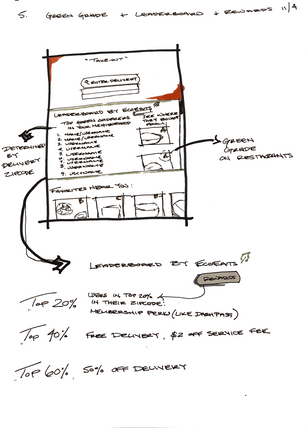
User Flows & Information Architecture
The Pivot
Upon receiving feedback from our peers and asking ourselves questions like:
-
“Would our idea hinder relationships between certain companies and delivery services?”
-
“Would our personas actually use this feature?” / “Can you picture Jennifer using this?”
This helped us let go of our attachment to our initial vision to create an idea that we were more excited and passionate about — a partnership between a delivery service and local farmers markets!
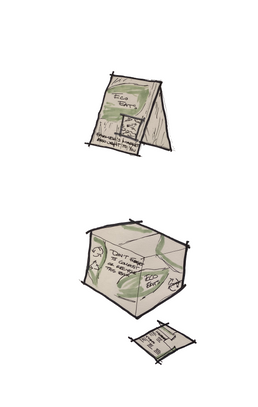
Once the design solution was determined, we developed user flows and information architecture to explore how users would discover the new Local section on Instacart and their interactions with the educational features.
User Flows
Information Architecture
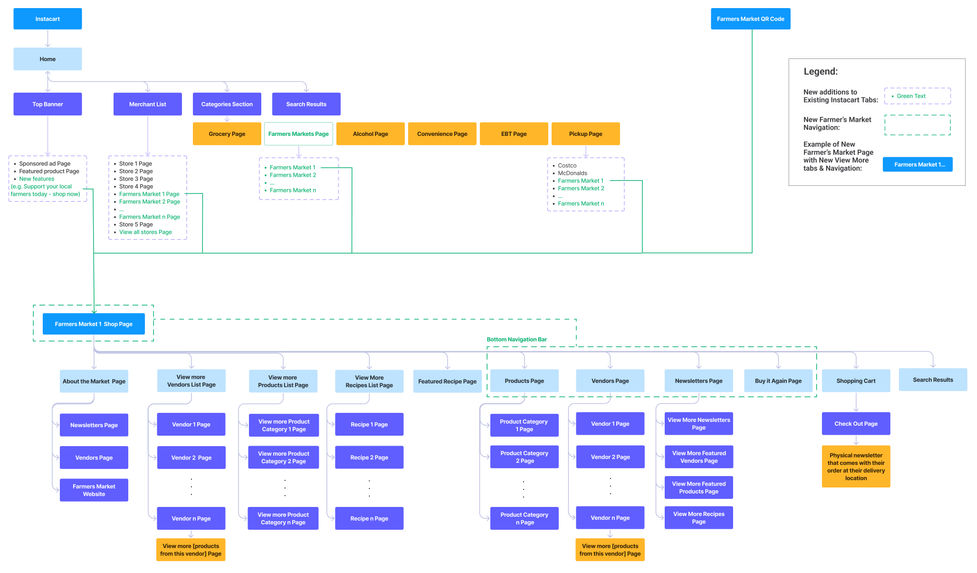
Iterate
Medium Fidelity Prototype
4 Usability Tests
We developed Medium fidelity prototypes for digital and physical artifacts. We conducted 4 Usability Tests with specific tasks and evaluated and applied the feedback.

Scan the QR Code
Experience the prototype used for Usability Testing.
Also pictured are the tasks used during the study.
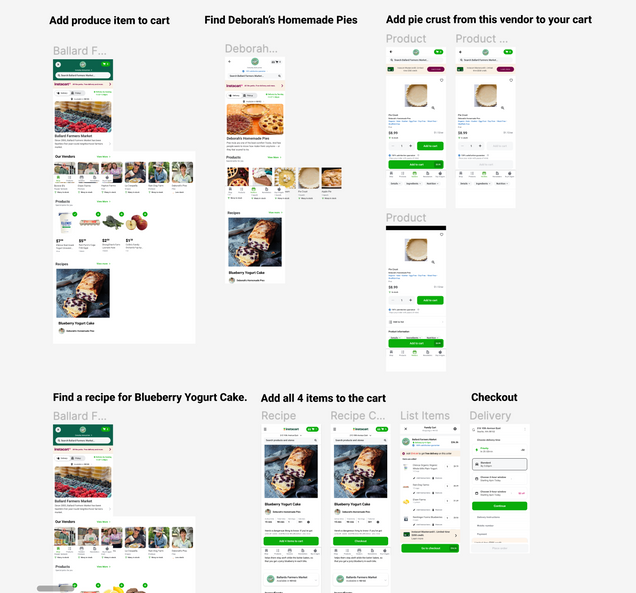
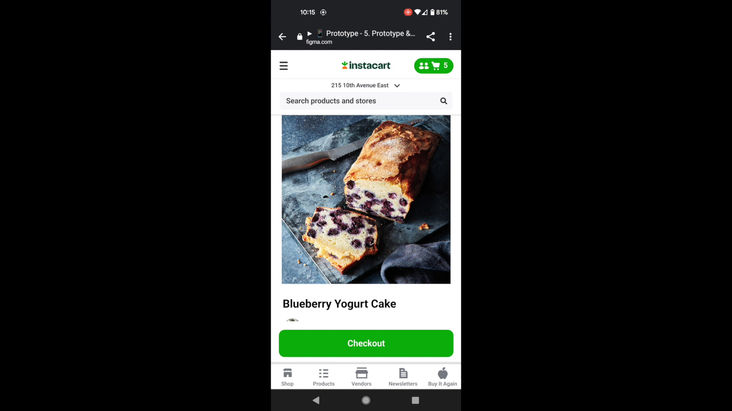
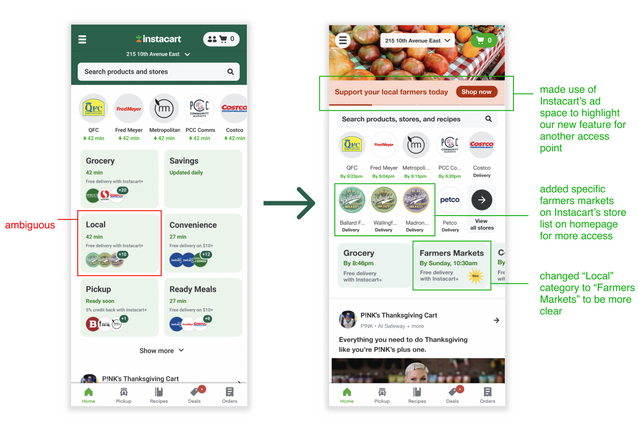
Instacart Mobile App Feature Prototype
-
2 out of 4 participants found “Local” category title to be too vague -> Outcome: The category was renamed to “Farmer's Markets”
-
4 out of 4 participants attempted to use the back button to access the Farmer's Market homepage, instead of using the bottom navigation -> Outcome: Back button enabled
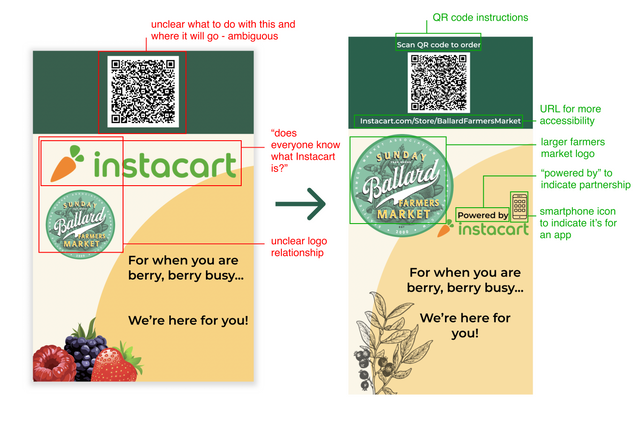
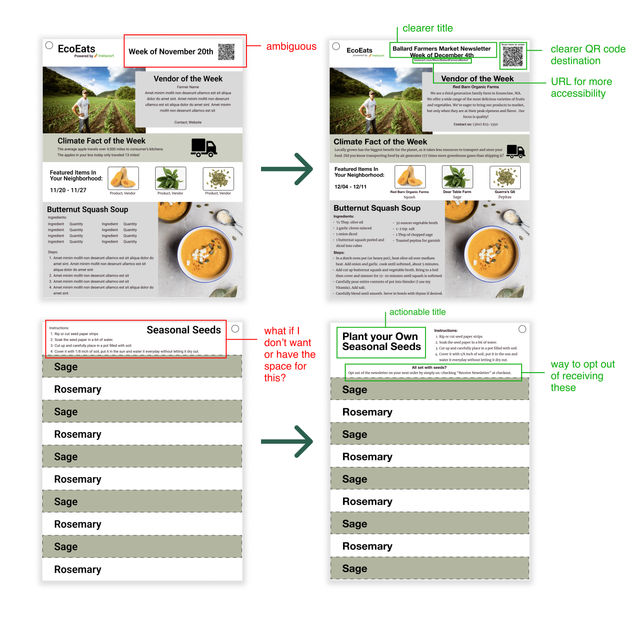
Signage Prototype
-
3 out of 4 Participants noted they would respond to the signage if the logo was bigger and if it was clear that it was a partnership with Instacart -> Outcome: Logo was made larger and “powered by” Instacart was added.
-
1 out of 4 participants was unsure of where the QR code leads -> Outcome: A URL was added below the QR code.
Newsletter Prototype
-
1 out of 4 participant noted that they may want to opt out of the newsletter weekly -> Outcome: Instructions of how to opt out was added.
-
2 out of 4 participants were unsure of where the QR code links to -> Outcome: A URL was added to the top of the newsletter.
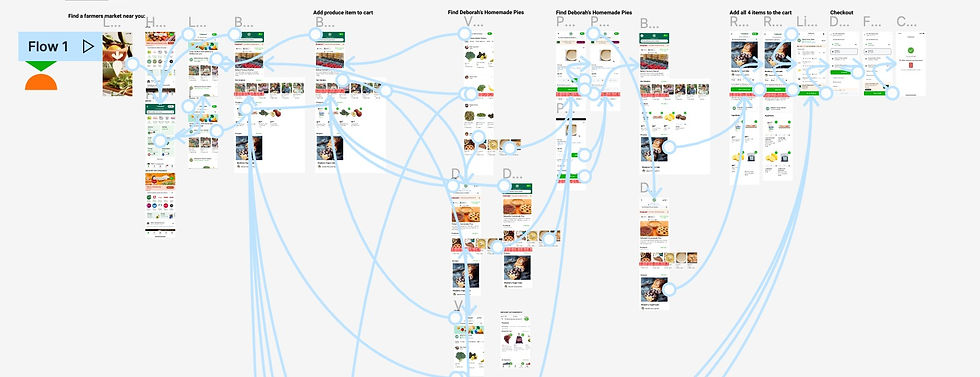
Solution
Final Design
A partnership between local farmers markets and Instacart that would enable users to:
-
Purchase local and sustainable goods from farmers markets on Instacart, a familiar interface that many of our target users already use in their routines
-
Learn more about sustainability, seasonal produce, and local vendors by reading a weekly newsletter printed on seed paper with their delivery order
-
Easily access online ordering via Instacart’s homepage, the newsletter, or signage next to a participating farmers market
Video:
(3:27 minutes)
Click to Play/Pause


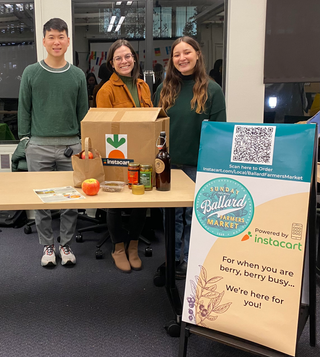
Potential Metrics
Time
Efficiency
Revenue
SUCCESS
New Customer Acquisition
Experience
Community
Ties
Next Steps:
Due to our time constraints, the design presented focuses on the consumer side. For next steps, we would explore more of the bigger picture — the entire ecosystem— that needs to be fleshed out for this new service to run, such as:
-
The vendor side of the design, and how a vendor would seamlessly provide their inventory for the upcoming week’s market, and how they can organize orders for those ordering from the market online or in-person
-
The shopper and delivery personnel, and how the goods would be packaged and swiftly delivered to the consumer. We are considering a box return, as well, so that packaging can be reused.
-
The desktop website and tablet versions of Instacart
-
Expand local offerings to include other small businesses, specifically for when farmer's markets are not occurring due to weather, time of year, etc.
Takeaways:
Our research and design solution presented us with insights on how consumers interact with existing food delivery services, use them for the convenience, and that they are used habitually. Our target users mean well and want to do their part in the fight against climate change, but simply do not have the time to add sustainable research to their to-do list. Designing EcoEats has allowed us to empathize with the target users and provide them with a solution that does not compromise their time. The solution was rewarding, as well, as we are able to direct users to support small businesses and their local community.
.png)
.png)

































